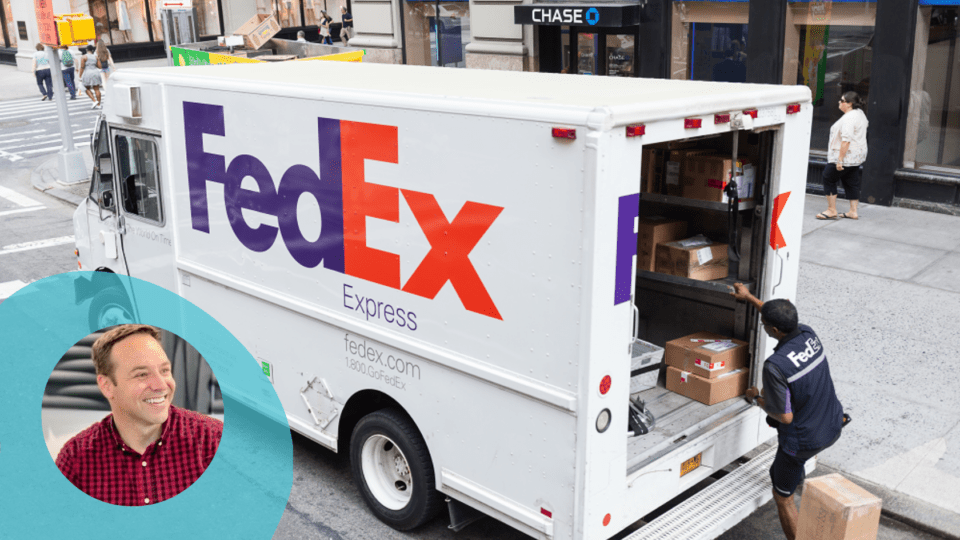For the second straight year, ecommerce retailers will be hit with record-breaking rate increases from FedEx. In late September 2022, the carrier announced their 2023 General Rate Increase (GRI). The rate hikes average to a 6.9% increase — the highest ever. With rising fuel costs, uncertainty from contractor disputes and missing profit targets, FedEx hopes to increase their operational efficiency.
FedEx wants shipments that are light, small, easy to handle and travel shorter distances, preferably to non-residential addresses. Shipments not checking those boxes will be hit hard with surcharges.
Ecommerce companies shouldn’t take the 6.9% increase at face value. Here’s a deeper view of what specific rate increases could impact them the most:
Additional Handling Surcharges
FedEx is making moves to avoid non-conveyable freight — anything that doesn’t easily fit on a conveyor belt, takes up too much space, requires additional handling, etc. Additional handling surcharges are up an average of 16.5%, far greater than the 6.9% average.
Further shipping distances mean higher surcharges. These fees are calculated by shipping zone (higher number = farther distance). The Additional Handling surcharge for weight is $29 for a Zone 2 shipment, but $36 for Zone 7-8.
Light products aren’t off the hook. FedEx and UPS alike use Dimensional Weight-based (DIM) pricing, meaning that light-but-large packages see higher pricing due to their size. The Additional Handling Surcharge for length and width is rising as well, including a 16.3% increase to $25 per package for Zone 7-8. Companies shipping large products with light weights, such as pillows or brooms, need to be aware of this.
Fuel Index Surcharges
FedEx’s new Fuel Index Tables could cost shippers up to one-quarter of their parcel spend. In 2023, a fuel surcharge will be tacked onto each shipment, based on the cost of that shipment.
As fuel prices fluctuate, so does the charge. If the average cost of diesel per gallon is between $2.51 and $2.56, each shipment will receive a 15.5% increase on the total cost of the package. On the higher end, if the average diesel cost is $3.91 to $3.96, shippers will pay a 22.5% fuel surcharge.
Everything that goes into the cost of a shipment affects these surcharges. Any improvements to minimize additional handling costs, expensive service type prices and anything else will pay dividends in reducing fuel surcharges.
How Does the GRI Impact You?
The 6.9% average increase is nothing more than an average, so shippers using a 6.9% increase when planning for operational budgeting next year may be in for a rude awakening. Their actual impact could be much higher, especially for ecommerce businesses that are shipping primarily to residential destinations.
These charges can add up quickly. Here’s are potential charges for a one-pound package shipped to a residential address in 2023:
- A residential surcharge (increasing up to 18% in 2023)
- A dimensional weight charge (higher than the actual weight charge, since it’s a light package)
- A delivery area surcharge (increasing 8.5% in 2023)
- A fuel surcharge (potentially as high as 22.5% of the whole shipment cost)
When planning for next year, companies need an accurate picture of what the GRI looks like for them. Crucial metrics are:
- Average zone
- Average price per package
- Total accessorial charges
- Shipping prices by service type
- Carrier agreement terms and discounts
With an accurate view of these metrics, they can identify opportunities to reduce the hit they take from increases.
Minimize the Impact
Logistics Intelligence software can be a shipper’s best friend in analyzing their data, modeling new DC locations and package sizes and negotiating contract terms. These charges are inevitable, but by harnessing their shipping data, companies can find opportunities to improve and reduce their impact.
Assessing average shipping zones and historical zip code data can show a need for a new distribution center as well as the best potential locations for it. This will reduce zone-based surcharges as well as improve delivery times and reduce carbon footprints.
If a company finds they are shipping to lower zones, they might not need the expensive FedEx Express option to ensure two-day delivery. This will greatly reduce base costs, which in turn reduces fuel surcharges.
Through efficiency upgrades in distance and packaging, shippers become more attractive partners to carriers. Quantifying these improvements can identify areas of leverage when negotiating contracts.
With the right tools and knowledge, companies can take the steps necessary to keep their shipping costs as low as possible in 2023.
Caleb Nelson, Chief Growth Officer at Sifted, oversees the growth of the company’s new Marketplace Intelligence platform, leads product enhancement efforts for the core business, and serves as the company’s industry thought leader. As one of the original Co-founders, Nelson has helped build Sifted from the ground up and was instrumental in its merger with VeriShip in 2020. He is passionate about using data to solve complex problems for shippers and providing solutions through Sifted’s software platform. Nelson is an executive entrepreneur with 15+ years of experience in sales, marketing and account management. Prior to joining Sifted, Nelson was Co-founder of Unishippers, where he successfully fostered a top-performing team within his company’s region.




